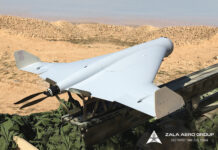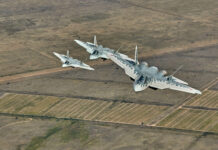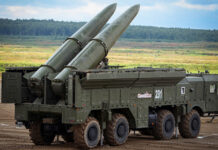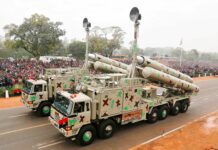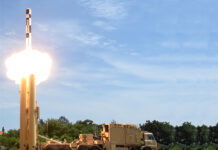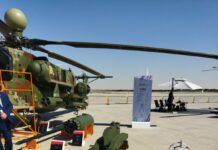Russia has restored production of its most advanced strategic bomber, the Tu-160 (NATO designation BLACKJACK). The first new build aircraft has made its maiden flight at the Kazan Aviation Plant airfield, 600 km east of Moscow. The aircraft spent about half an hour at an altitude of 600m. As an upgraded version of the former BLACKJACKs, the aircraft is designated Tu-160M. In the scope of this effort, the Kazan production facilities have been significantly modernised. According to Denis Manturov, the Russian Minister of Industry and Trade, the modernisation plan included the workshops’ equipment replacement, when “world’s largest installation for electron beam welding and vacuum annealing of titanium was put into operation”. The entire aircraft production was completely digitised.
According to the United Aircraft Corporation (UAC) CEO Yury Slyusar, 80 per cent of the workshop’s systems and equipment have been modernised as part of the programme.
The Tu-160M upgrade package includes:
- modern avionics (including control equipment)
- a strapdown inertial navigation system
- an electronic warfare fit
- fuel-measuring and flow-metering systems
- new NK-32-02 engines
The propulsion system is produced under two long-term contracts between the UAC and the United Engines Corporation. Due to the new engines installation, the aircraft’s range has increased by 1,000 km.
Tu-160M Background
The existing fleet of the Tu-160s called as “WHITE SWANS” in Russia, comprises 17 aircraft. In 2017, Yury Borisov, then Deputy MoD and now Deputy Prime Minister announced plans to buy about 50 modernised Tu-160 bombers with an annual production of three to four aircraft from 2021. The programme appears to suffer delays. The contract for just ten new Tu-160Ms worth 160 billion rubles was awarded in January 2018. The estimated unit procurement cost of each upgraded BLACKJACK is around US$270M.
The Tu-160 is a supersonic strategic bomber with a variable sweep wing, developed at the Tupolev Design Bureau in the 1970s and 1980s. It is designed to engage targets with nuclear and conventional weapons behind the opponent’s lines. It is capable of carrying 12 cruise missiles with all weapons located inside the fuselage.
Russian experts suggest that the Tu-160’s weapon set should include long-range air-to-ground missiles, including hypersonic ones. The Tu-160s were tested during Russian operations in Syria.




